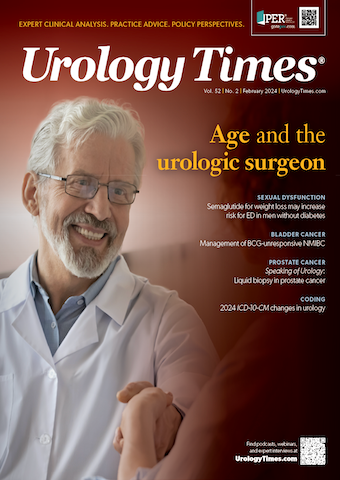News
Article
Urology Times Journal
Retrospective review shows penile girth enhancement fillers induce safe outcomes
Author(s):
In a retrospective study of almost 500 men, the use of hyaluronic acid filler for penile girth enhancement appeared safe with limited adverse events.
Using the PhalloFILL system, a novel hyaluronic acid filler, appeared to be safe when administered for penile girth enhancement, according to a retrospective review presented at the 24th Annual Fall Scientific Meeting of Sexual Medicine Society of North America.1
Amy Pearlman, MD

“We still have a lot of work to do [when it comes to research]. And I think this is a really exciting time for us in urology and sexual medicine,” Amy Pearlman, MD, Prime Institute, said during her presentation. “I know that I went into this field because urologists tend to be early innovators and adopters using technology.”
To start, Pearlman noted that prospective, randomized, and/or blinded trials have demonstrated that hyaluronic acid dermal filler injections for penile girth enhancement are safe. “But there are limitations there,” she added.
For example, these trials are comprised of small sample sizes of fewer than 80 patients, and the follow-up for safety and efficacy is only up to 18 months.
Therefore, Pearlman and colleagues retrospectively reviewed the work from a single injector in nearly 500 patients over a 3-year time span (August 2020 to April 2023). Using the PhalloFILL technique, patients are injected every 3 weeks, with 4 to 6 units each time.
In the study, the investigators observed 2 injection site infections—both as a result of non-compliance after treatment—1 reversal with hyaluronidase, and 3 granulomas that were resolved with hyaluronidase.
Pearlman said that, initially with this protocol, men were injected with intracavernosal injections (ICI), which led to 3 cases of priapism; however, since then, no patients have been injected with ICI therapy and no other priapism cases have been observed.
“And perhaps, most importantly, we're not hurting patients,” Pearlman said, adding that there have been no reports of erectile dysfunction or penile sensation loss. “None of these patients require a trip to the operating room, in terms of how this compares [to permanent filler injections]. … And all of these adverse events were resolved with conservative measures.”
In addition, she highlighted that the patients who had infections didn't follow the treatment protocols, demonstrating the need for physicians to make sure patients understand what the protocols are and why they matter.
For next steps, further and more long-term data are needed for safety and efficacy. “What happens 5 years from now? What happens 10 years from now? We're starting to see reports of people getting the filler, and then their penile filler removed. So might that be the case with our penile filler patients? We don't know the answer to that question yet,” Pearlman said, adding that questionnaires on patient satisfaction will help to answer those questions.
“So, the take-home message here, this is an exciting time,” Pearlman concluded. “Now we have [in recent retrospective studies] almost 1000 patients showing safety of this product.”
Reference:
1. Pearlman A, Gumpf K2, Moore W, et al. Safety of novel hyaluronic acid dermal filler injections for penile girth enhancement. Presented at: 24th Annual Fall Scientific Meeting SMSNA; November 16-18, 2023; San Diego, CA. Abstract 51.

Newsletter
Stay current with the latest urology news and practice-changing insights — sign up now for the essential updates every urologist needs.






















